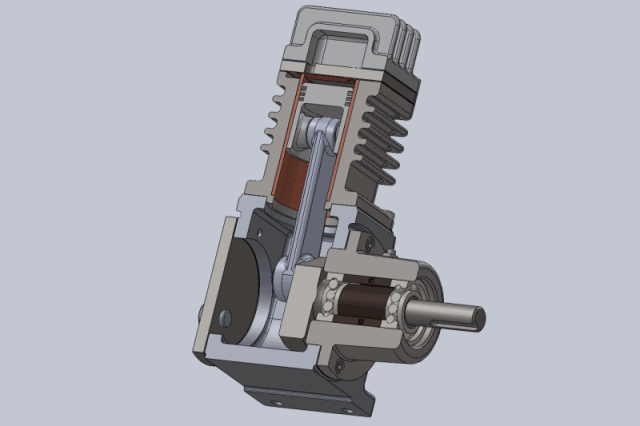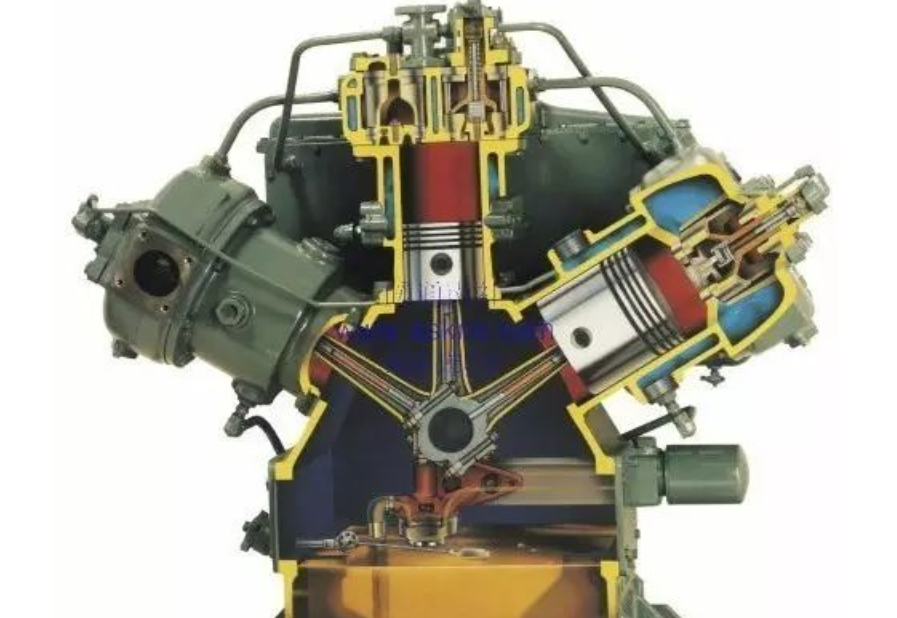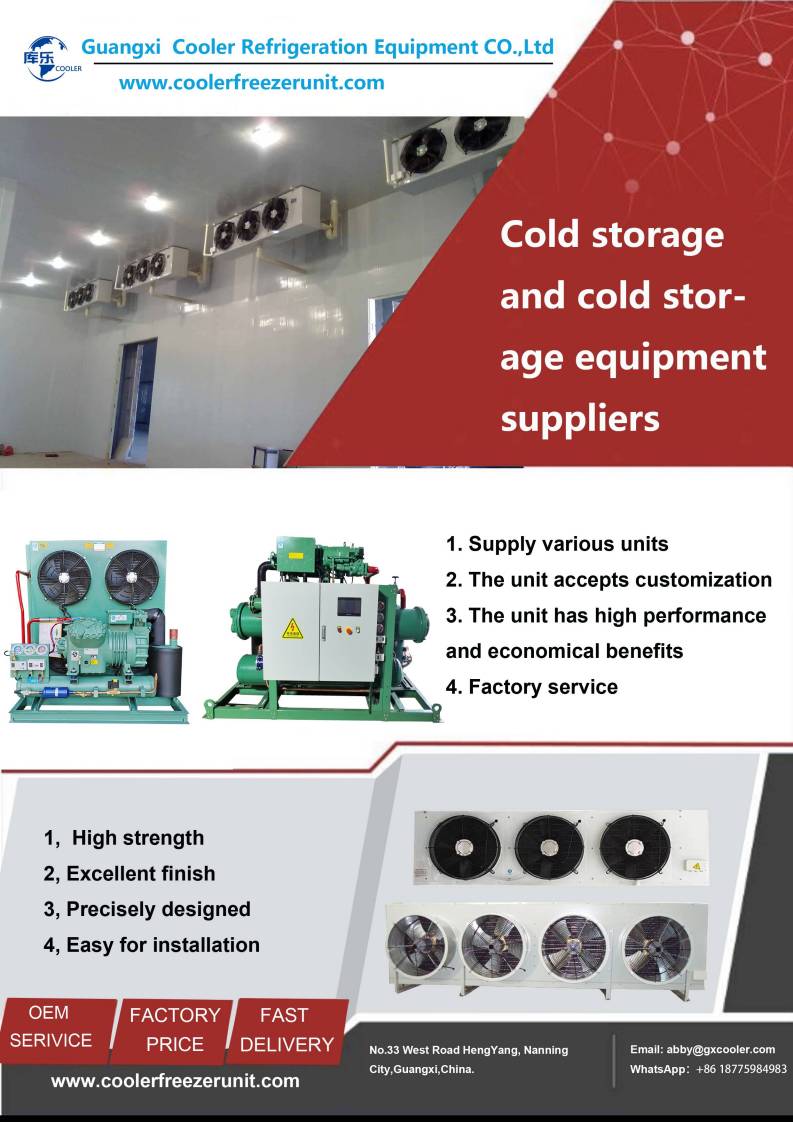1,Načelo delovanjaBatni kompresor je valj, ventil in valj za izmenično gibanje bata, ki ga sestavlja nenehno spreminjajoča se delovna prostornina. Če ne upoštevamo dejanskega dela batnega kompresorja, izgube prostornine in izgube energije (torej idealnega delovnega procesa), lahko delo, ki ga ročična gred bata kompresorja opravi na tedenski obrat, razdelimo na sesalni, kompresijski in izpušni proces.
Postopek stiskanja:Bat se od spodnje točke zaustavitve premakne navzgor, sesalni in izpustni ventil pa sta v zaprtem stanju, plin v zaprtem valju se stisne, prostornina valja pa se postopoma zmanjšuje, tlak in temperatura pa se postopoma povečujeta, dokler se tlak plina v valju in tlak izpušnih plinov ne izenačita. Proces kompresije se na splošno šteje za izentropni proces.
Izpušni postopek: Bat se še naprej premika navzgor, zaradi česar je tlak plina v valju večji od tlaka izpušnih plinov, izpušni ventil se odpre in plin v batu potisne tlak iz valja v izpušno cev, dokler se bat ne premakne do zgornjega omejevalnika. Na tej točki se zaradi sile vzmeti izpušnega ventila in vpliva gravitacije samega ventila izpušni ventil zapre na izpušnem koncu.

2, uporaba batnih kompresorjev
Glavne uporabe: hladilno skladiščenje in zamrzovanje ter hlajenje; trg uporablja bolj polhermetične batne kompresorje; manjše uporabe: komercialno hlajenje in klimatizacija.
Polhermetični batni kompresor za hladilnice običajno poganja štiripolni motor, njegova nazivna moč pa je običajno med 60 in 600 kW. Število valjev je 2–8, do 12. 2. Uporaba batnih kompresorjev
Glavne uporabe: hladilnice in zamrzovalniki uporabljajo bolj polhermetični batni kompresor; manjše uporabe: komercialno hlajenje in klimatske naprave.
Polhermetični batni kompresorzahladilno skladiščenjeObičajno ga poganja štiripolni motor, njegova nazivna moč pa je običajno med 60 in 600 kW. Število valjev je od 2 do 8, do 12.

3, prednosti batnih kompresorjev
(1) Potreben tlak je mogoče doseči ne glede na pretok, s širokim razponom izpustnih tlakov do 320 MPa (industrijska uporaba) in celo 700 MPa (v laboratoriju).
(2) Zmogljivost enega stroja za kateri koli pretok do 500 m3/min.
(3) Nizke potrebe po materialu v splošnem tlačnem območju, večinoma izdelani iz običajnih jeklenih materialov, lažji za obdelavo in cenejši za izdelavo.
(4) Višja toplotna učinkovitost, običajno velike in srednje velike enote lahko dosežejo približno 0,7~0,85 adiabatnega izkoristka.
(5) Močna prilagodljivost pri prilagajanju količine plina, tj. območje izpušnih plinov je širše in nanj ne vpliva visok ali nizek tlak, poleg tega pa se lahko prilagodi širšemu območju tlaka in zahtevam glede prostornine hlajenja.
(6) Teža in lastnosti plina le malo vplivajo na delovno zmogljivost kompresorja, isti kompresor pa se lahko uporablja za različne pline.
(7) Pogonski stroj je relativno preprost, večinoma uporablja elektromotorje, običajno brez regulacije hitrosti, in je zelo enostaven za uporabo.
(8) Tehnologija batnih kompresorjev je bolj zrela, proizvodnja pa uporablja nakopičene izkušnje.
4, slabosti batnih kompresorjev
(1) kompleksna in zajetna struktura, obrabni deli, velika površina, visoke naložbe, vzdrževalna obremenitev, uporaba krajšega cikla, vendar lahko po naporih doseže več kot 8000 ur.
(2) Hitrost ni visoka, stroj je velik in težak, izpušni volumen enega samega stroja pa je običajno manjši od 500 m3/min.
(3) Vibracije med delovanjem stroja.
(4) Izpušni plini niso neprekinjeni, pretok zraka pulzira, kar lahko povzroči vibracije cevi, kar pogosto povzroči poškodbe cevovodnega omrežja ali delov stroja zaradi pulziranja pretoka zraka in v resnih primerih resonance.
(5) Regulacija pretoka z uporabo subvencionirane prostornine ali obvodnih ventilov, čeprav preprosta, priročna in zanesljiva, vendar z velikimi izgubami moči in zmanjšano učinkovitostjo med delovanjem z delno obremenitvijo.
(6) Kompresorji, mazani z oljem, z oljem v plinu, ki ga je treba odstraniti.
(7) Veliki obrati, ki uporabljajo več kompresorskih sklopov, kadar je veliko upravljavcev ali je intenzivnost dela visoka.
Čas objave: 3. avg. 2022






